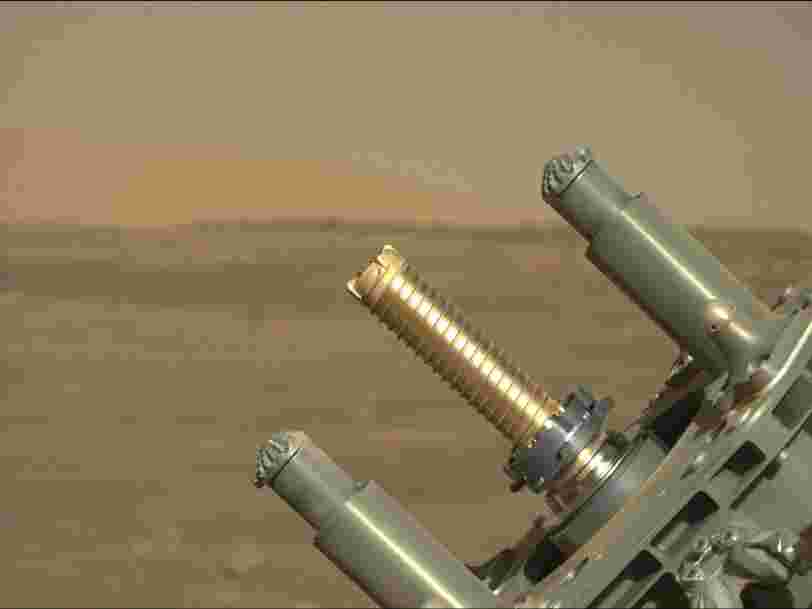NASA can't find the Mars rock sample that the Perseverance rover drilled - it mysteriously disappeared
Morgan McFall-Johnsen | Publié le
- NASA's Perseverance rover tried to collect its first Mars rock sample on Friday, but came up empty.
- Perseverance drilled a hole in the rock, withdrew, then found that the rock core had vanished.
- Mission controllers suspect that the rock reacted unexpectedly, not that the rover made an error.
- See more stories on Insider's business page .
NASA has spent nine years and about $2 billion in its quest to drill and store samples of Martian rocks. The Perseverance rover was poised to finally make that happen for the first time on Friday.
The rover picked a rock in an ancient Mars lake bed that could have once held alien life, and attempted to drill. But then something strange happened: The sample seems to have vanished without a trace.
There's a finger-sized hole in the rock where the sample should have come out, but there's nothing in the rover's sample-collection tube. And the rock core isn't laying around anywhere near the hole. It's just not there.
"While this is not the 'hole-in-one' we hoped for, there is always risk with breaking new ground," NASA associate administrator Thomas Zurbuchen said in a press release . "I'm confident we have the right team working this, and we will persevere toward a solution to ensure future success."
To figure out what happened, NASA is instructing Perseverance to take close-up pictures of the bore hole it made. Mission controllers will then try to make plans for another sampling attempt.
"The initial thinking is that the empty tube is more likely a result of the rock target not reacting the way we expected during coring, and less likely a hardware issue with the Sampling and Caching System," Jennifer Trosper, project manager for Perseverance, said in a statement. "Over the next few days, the team will be spending more time analyzing the data we have, and also acquiring some additional diagnostic data to support understanding the root cause for the empty tube."
Perseverance's main goal on Mars is to explore a region called Jezero Crater and gather rock samples; the tube that came up empty is one of 43 that the rover is carrying for this purpose. NASA's long-term plan is to send another mission to Mars in about a decade to collect the samples Perseverance collects and bring them back to Earth. Then future scientists can investigate whether microbial life may have lived in the lake that once filled the basin.
In other words, a significant amount of planning and money is riding on Perseverance's ability to drill these samples successfully.
Mars is keeping NASA on its toes
In its attempt to take its first sample, Perseverance first used an abrasion tool to clear dust and surface coatings from the rock. Then the rover extended its 7-foot-long arm, which has a sample-collection tool on the end. This tool uses a percussive drill to push a hollow coring bit into the rock.
The entire process is autonomous. Mission controllers simply send a "go" command to Perseverance.
The data the rover has beamed back to Earth from its attempt so far indicates that it carried out the necessary steps exactly as planned. Still, for some reason, the tube is empty.
The rock Perseverance was trying to sample is typical of the region it's been driving through. Jezero Crater's floor is covered in what NASA is calling "paver stones." These porous rocks could be sedimentary (meaning made by river and lake activity) or volcanic. Taking a sample would help scientists determine which type of rocks line the crater floor, thereby enhancing their understanding of the area's history.
Other Mars missions have encountered unexpected difficulty from rock and soil, too. NASA recently had to abandon its InSight lander's "mole," a probing tool that was supposed to burrow into the Martian crust and measure its temperature. The mole found itself bouncing in place on a foundation of firm soil called "duracrust."
"I have been on every Mars rover mission since the beginning, and this planet is always teaching us what we don't know about it," Trosper said. "One thing I've found is, it's not unusual to have complications during complex, first-time activities."
Via PakApNews